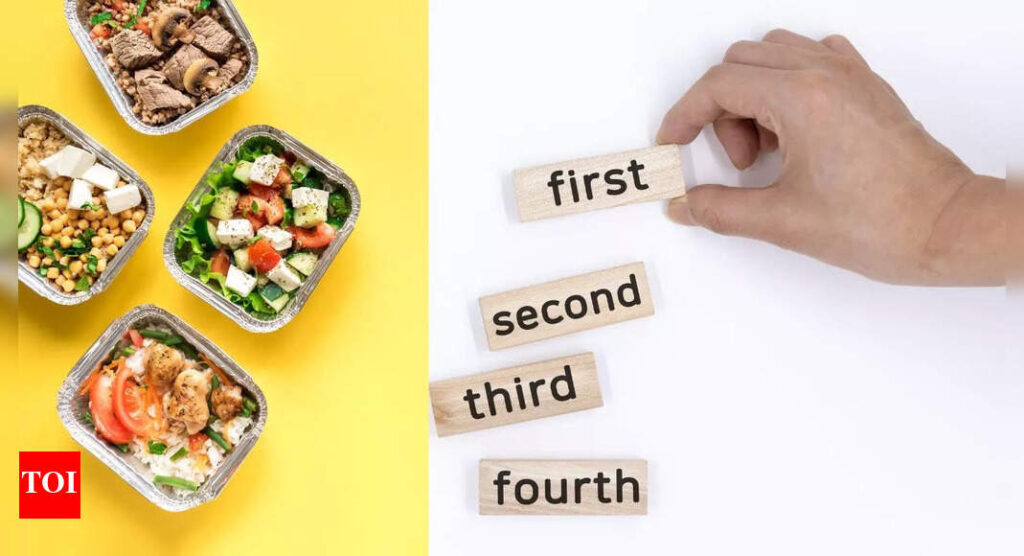
Recent research and expert advice show that in Indian meals, the sequence matters. The order you eat your food can help control blood sugar. Start with non‑starchy vegetables like salad or stir-fried greens, then move on to protein and good fats like dal, paneer, eggs, nuts or seeds. Finally, finish with carbohydrates such as roti, rice, or millet. Eating this way slows down digestion and helps avoid sudden glucose spikes. It also boosts insulin response, helps you feel full longer, and supports better metabolic health. Perfect for people with pre‑diabetes, type 2 diabetes, or anyone wanting steadier energy levels
What is meal sequencing and how it works in controlling blood sugar
Meal sequencing refers to eating your meal components in a specific order:
- Vegetables (especially non‑starchy/fiber-rich)
- Proteins and healthy fats
- Carbohydrates (grains, starches, or sweets)
Eating fiber and protein first slows gastric emptying and reduces the rate at which carbohydrates are absorbed. This helps reduce post-meal blood sugar spikes. How meal sequencing works1. GLP‑1 release and insulin efficiency: Protein and fat eaten first increase incretin hormones like GLP‑1, triggering better insulin response and slowing down glucose absorption2. Delayed gastric emptying: Starting meals with fibre and fats slows digestion, leading to a gradual blood sugar rise rather than a sudden spike3. Improved insulin sensitivity: Consistent sequencing may gradually enhance the body’s insulin function, benefiting long‑term metabolic health
Benefits of meal sequencing
By adopting a meal sequencing approach, individuals with diabetes can experience several benefits, including:
- Better post-meal
blood sugar control : Eating vegetables and protein before carbohydrates can slow down the digestion and absorption of glucose, reducing blood sugar spikes. - Reduced insulin requirements: By regulating blood sugar levels, meal sequencing can help reduce the need for insulin medication.
- Improved overall
diabetes management : Meal sequencing can be a valuable tool in managing diabetes, reducing the risk of complications, and improving overall health. - Potential weight loss benefits: By controlling blood sugar levels and improving insulin sensitivity, meal sequencing can also support weight loss.
- Enhanced nutrient absorption: Eating a balanced meal with vegetables, protein, and complex carbohydrates can ensure optimal nutrient absorption.
Also read | Natural herbs that help regulate blood sugar levels at home










